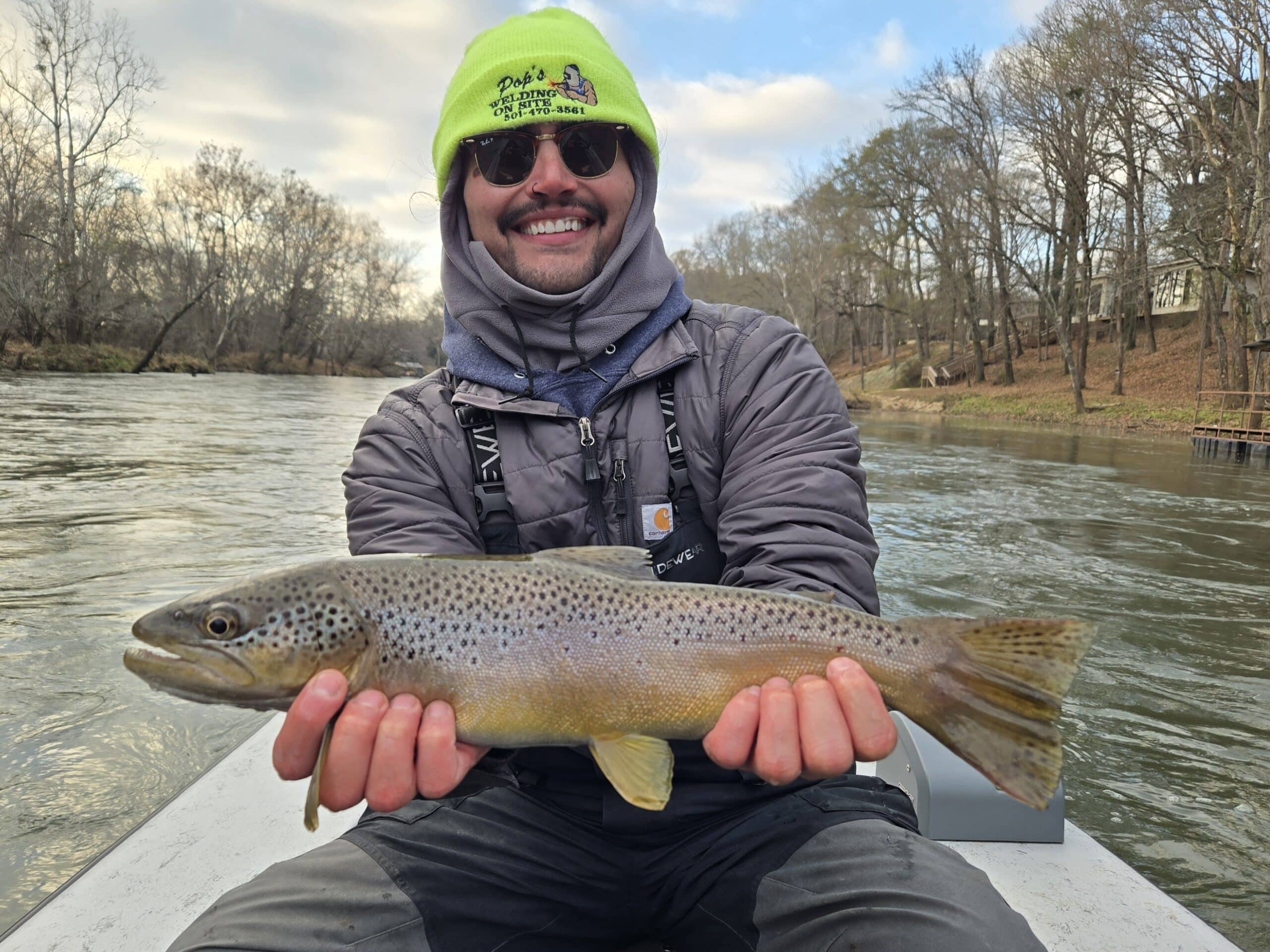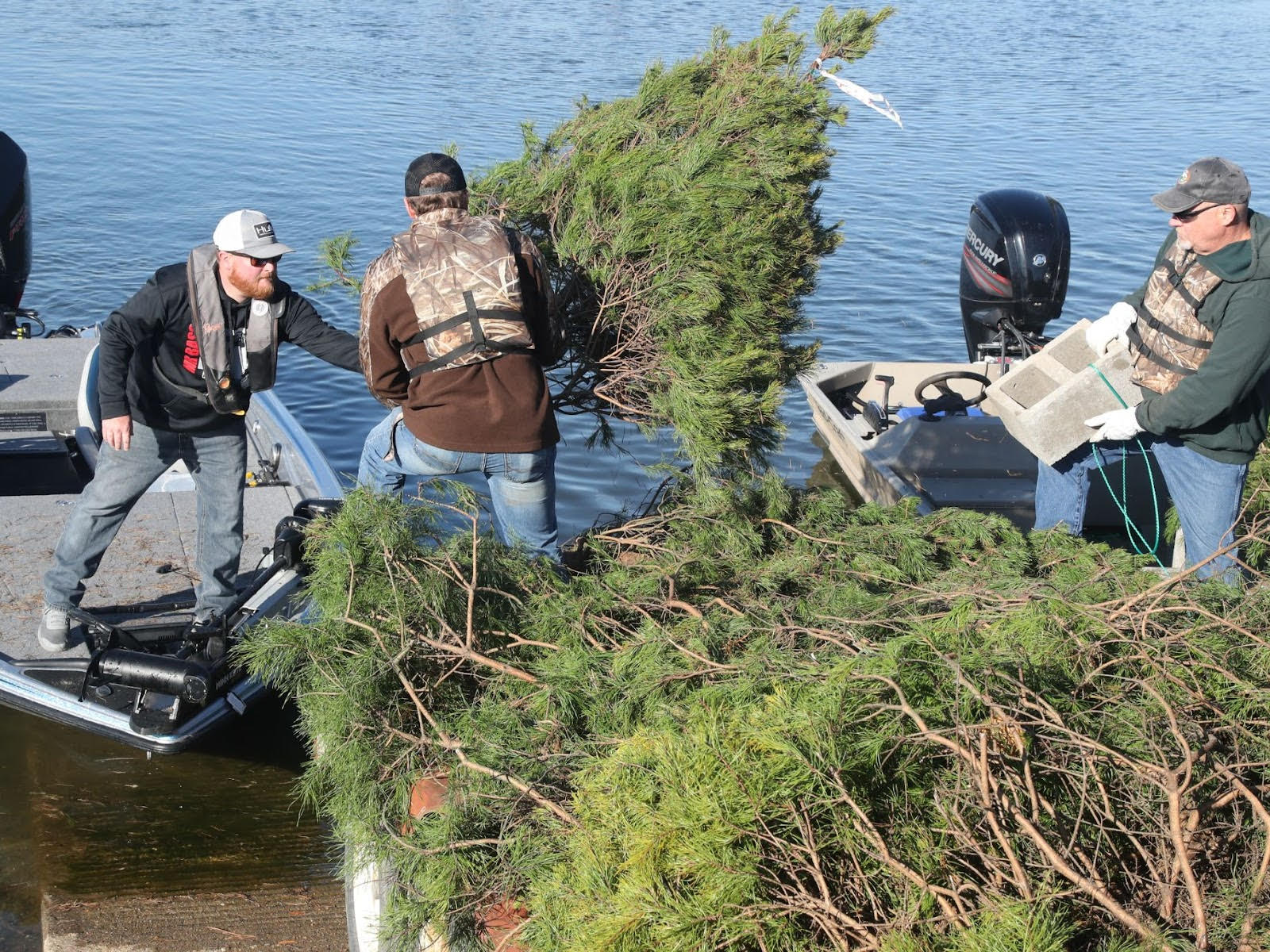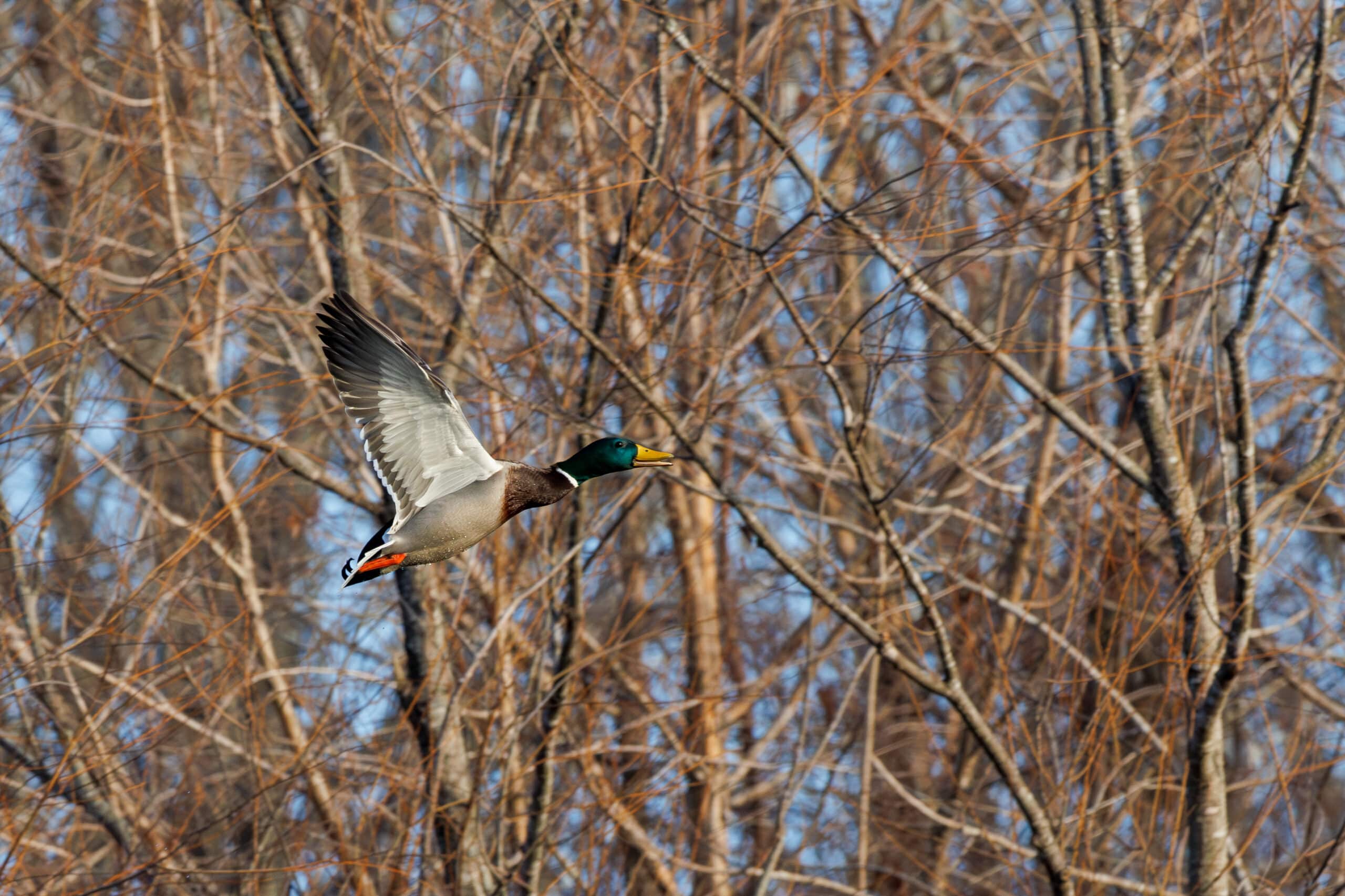Deer-specific Hunting Regulations
Tagging and Checking a Deer
Option 1:
Immediately upon harvest and before moving your deer, you can check your game via the internet, through the AGFC mobile app or by phone at 833-289-2469.
Click here to download the new AGFC app for your Android device.
Click here to download the new AGFC app for your Apple device.
If you are using the AGFC mobile app to check game and are not connected to internet or cell service, you’ll receive a notice on your screen that your submission is pending upon validation. When your device returns to service or internet connection, you should sync your app by selecting the sync button. Once the submission goes through, you will receive your confirmation on the app screen, via email and in your app inbox.
Option 2:
- Immediately upon taking a deer (before moving it), fill out the appropriate deer tag from your license and complete all information, except Check #, legibly and in ink (you may substitute a piece of paper for this tag). Fasten the tag to the ear or antler. The original tag must remain as attached to the deer until point of final storage. Resident youth will need product code YDT to tag a deer. Nonresident youth will need product code YDTN to tag a deer.
- Duplicate harvest information reflecting the name, address, species, sex, date taken and check confirmation number must remain with all portions until point of final storage, including while in transit. Carcass ID Tag
- For deer harvested on private lands, use the current deer zone map for zone numbers.
- For deer harvested on public lands, use the zone number listed on the appropriate area in the current Hunting Guidebook.
- Call 833-289-2469, visit www.agfc.com/license or use the AGFC mobile app to check your deer within 12 hours of harvest.
- After checking game, record the check number on your tag.
- Entrails may be removed, but evidence of the animal’s sex must remain until checked. Deer may be quartered in the field, but the head must be kept within arm’s reach of all four quarters of the animal until checked.
- No deer/elk may be transported out of the CWD Management Zone without following these procedures.
- No big game animal may be transported across state lines before being checked unless normal travel routes require a hunter to cross a state line to check the animal.
- If you choose to give away all or a portion of your game after it has been checked, you must use a game transfer form.
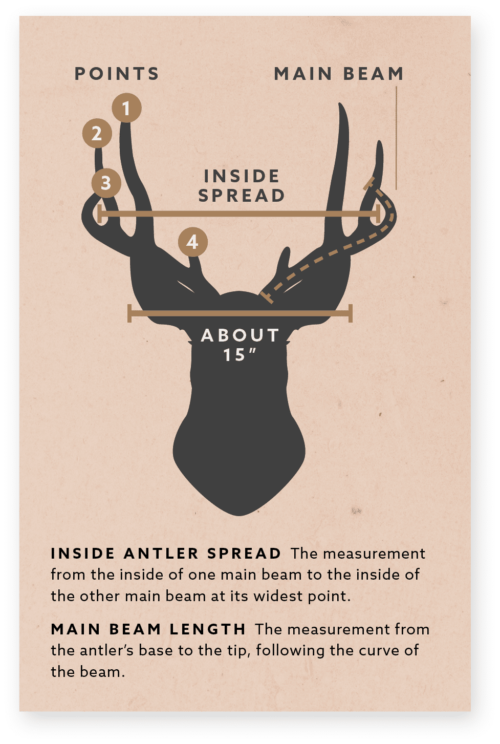
Antler-point Restrictions
The end of the main beam and all points 1 inch long count as points in regard to antler-point restrictions.
For Youth Hunters
Hunters who are 6 to 15 years old may harvest any buck without regard to antler size or points.
Three-point rule
A legal buck must have both antlers shorter than 2 inches (button buck) or have three or more points on one side of his rack. The three-point rule applies statewide unless mentioned below.
12-inch inside spread or 15-inch main beam rule
On Dr. Lester Sitzes III Bois d’Arc, Harold E. Alexander Spring River, Hope Upland, Lafayette County, Mike Freeze Wattensaw and Moro Big Pine Natural Area, Scott Henderson Gulf Mountain, Shirey Bay Rainey Brake WMAs a buck must have:
- Both antlers under 2 inches (button buck included); or
- An inside spread of 12 inches or more in width; or
- At least one main beam 15 inches or more in length.
15-inch inside spread or 18-inch main beam rule
A legal buck in deer zones 16, 16A and 17 and on Buck Island, Cut-Off Creek, Dave Donaldson Black River, Freddie Black Choctaw Island WMA Deer Research Area East Unit, George H. Dunklin Jr. Bayou Meto, Henry Gray Hurricane Lake, Rick Evans Grandview Prairie, St. Francis National Forest, Sheffield Nelson Dagmar, and Trusten Holder WMAs a buck must have:
- Both antlers under 2 inches (button buck included); or
- An inside spread of 15 inches or more in width; or
- At least one main beam 18 inches or more in length.
Other legal definitions
- On Bald Knob, Big Lake, Cache River, Felsenthal, Holla Bend, Overflow, Pond Creek, Wapanocca and White River NWRs; Rex Hancock Black Swamp and U of A Pine Tree Experimental Station WMAs any buck deer may be legally harvested during all deer hunts.
- On Greers Ferry Lake WMA any buck may be legally harvested during the deer muzzleloader Mobility Impaired permit hunt.
- On Hobbs State Park Conservation Area, Nimrod Lloyd Millwood WMA and Johnson County WRA on Dardanelle WMA any buck may be legally harvested during the deer modern gun mobility impaired hunt.
Legal Hunting Equipment
Long, recurve and compound bows: Must have at least a 35-pound pull. Scopes, string locks and mechanical string releases may be used. Big-game hunters must use arrowheads at least 7/8-inches wide (including mechanicals). Arrows and arrowheads containing firearm ammunition or poison may not be used.
Crossbow: Crossbows must have at least a 125-pound pull and a mechanical safety. Scopes may be used. Big-game hunters must use arrowheads at least 7/8-inches wide (including mechanicals). Arrows and arrowheads containing firearm ammunition or poison may not be used.
Propelled Arrows: Arrows propelled from a compressed air system or by the action of an explosive or combustible propellant may not be used.
Spear: Spears may be used during archery seasons.
The following firearms are allowed during the alternative firearms season:
- Muzzleloading rifles with a barrel 18 inches or longer and of .40 caliber or larger.
- Magnifying sights may be used.
- Buckshot size 4 or larger may be used to hunt deer with a muzzleloader.
- Muzzleloading handguns with barrels 9 inches or longer and:
- .45 caliber or larger if they shoot conical bullets (200 grains or heavier), or
- .530 caliber or larger if they shoot round balls.
- Non-semiautomatic centerfire firearms (including non-semiautomatic handguns with barrels 4 inches or longer) that fire a straight-wall cartridge .30 caliber or larger.
- Large bore air rifles at least .40 caliber that shoot a single, expandable slug, produce at least 400 feet/pound of energy at the muzzle, and are charged from an external tank. NOTE: Large bore air rifles are not legal for harvesting bear or elk.
NOTE: Shotguns with slugs are not allowed during alternative firearms season.
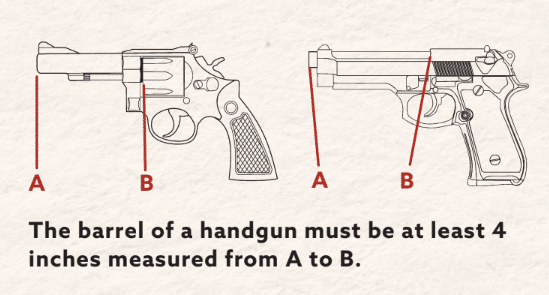
Modern guns and large bore air rifles (see above) may be used for deer EXCEPT:
- buckshot in a .410 shotgun.
- shot smaller than No. 4 buckshot in any shotgun.
- rimfire cartridges, military or full metal jacketed ammunition.
- centerfire rifles or handguns smaller than .22 caliber.
- handguns with barrels shorter than 4 inches.
NOTE: Handguns smaller than .45 caliber and with barrels no longer than 6 inches may be used to dispatch game wounded with any legal weapon.
- Modern guns, alternative firearms or archery equipment may be used during modern gun deer and bear seasons.
- Hunters may use only alternative firearms or archery equipment during alternative firearms deer or bear seasons.
- Hunters may use only archery equipment during archery deer and bear seasons.
- Hunters may use air rifles on small game.
- Only shotguns (10 gauge and smaller) and archery equipment (including crossbows) are legal for turkey hunting. Shot larger than No. 2 common shot is prohibited.
- Unless otherwise posted, handguns not meeting legal hunting equipment definitions above may be carried on Commission-owned or controlled property.
Hunters and those accompanying hunters in areas where modern gun or alternative firearms deer, bear or elk seasons are open must wear at least 400 square inches of hunter orange, chartreuse or blaze camouflage above the waist and a head garment of those same safety colors. Safety colors are not required for migratory bird hunters in these areas. Click here for hunter orange requirements on ground blinds on WMAs.
Baiting Deer
Baiting is the direct or indirect placing, exposing, depositing, distributing or scattering of salt, grain or other feed that could serve to lure or attract wildlife to, on or over an area where hunters are attempting to take them. An area is considered baited for 10 days following complete removal of bait.
- Hunters may bait and feed deer on private land outside of the CWD Management Zone year-round.
- Food plots may be used year-round.
- Baiting is not allowed on wildlife management areas.
It is unlawful to feed wildlife within the CWD Management Zone except:
- Bait may be used to hunt deer and elk on private land from Sept. 1-Dec. 31.
- Baiting bears, see bear-specific hunting regulations.
- Hunting or trapping furbearers with the use of bait during open furbearer trapping seasons on private land.
- Incidental feeding of wildlife from livestock operations.
- Normal agricultural, gardening or soil stabilization practices are allowed.
- Attracting or feeding birds and squirrels with birdfeeders and bird baths.

